19 start with P start with P

This volume heralds the appearance, for the first time in many years, of a totally new document by Sigmund Freud. It is the draft of a lost metapsychological paper, one of twelve essays written during World War I at the peak of the master's powers. Freud intended to publish all twelve in book form, under the title Preliminaries to a Metapsychology, and thereby set out the theoretical foundations of psychoanalysis. Scholars have long lamented the disappearance without a trace of seven of these important essays.
Only in 1983 did Ilse Grubrich-Simitis happen upon this draft, in Freud's handwriting, in an old trunk containing papers and documents of his Hungarian collaborator Sándor Ferenczi. With the help of a brief letter Freud had written on the back of the last page, she soon realized that the manuscript she had found was the draft of the final paper in the series. That draft is published here in facsimile, together with a transcription in German of the facsimile and the English translation.
In the first part of the draft, which is written in a kind of shorthand, Freud contrasts the three classic transference neuroses: anxiety hysteria, conversion hysteria, and obsessional neurosis. In the second part, which is written in complete sentences, Freud undertakes a daringly speculative "phylogenetic fantasy" He explores whether the debilitating illnesses of the neurotic and the psychotic today might have originated long ago as adaptive responses of the entire species to threatening environmental changes or to traumatic events in the prehistory of mankind.
In the draft "Fantasy" Freud modifies and expands the line of reasoning he began in Totem and Taboo (1912-13) after an intensely productive exchange with Ferenczi about Lamarckian concepts, making this recovered draft of major significance to students not only of psychoanalysis but also of the social sciences, humanities, and natural sciences.
Ilse Grubrich-Simitis has contributed a detailed essay, setting the overview in the context of Freud's life, his work, and his historical and scientific prominence. She quotes from relevant letters of Freud and Ferenczi, some published here for the first time.

By focusing on the unconscious fantasies about post-fascist body and post-fascist voice that suffuse the texts of Wolf and others, Hell radically reconceptualizes the notion of the author’s subjective authenticity. Since this notion occupies a key position in previous literary-historical accounts of East German culture, Hell’s psychoanalytic approach problematizes the established literary model of an "authentic feminine voice" that gradually liberates itself from the GDR’s dominant ideological narrative. Far from operating solely on a narrowly political level, the novels of Wolf and others were intricate family sagas portraying psychic structures linked in complex ways to the GDR’s social dynamics. Hell traces this link through East German literatrure’s dominant narrative, a paternal narrative organized around the figure of the Communist father as antifascist hero.

Psychology is the dogma of our age; psychotherapy is our means of self-understanding; and "repressed memory" is now a universally familiar form of trauma. Jeffrey Prager, who is both a sociologist and a psychoanalyst, explores the degree to which we manifest the clichés of our culture in our most private recollections.
At the core of Presenting the Past is the dramatic and troubling case of a woman who during the course of her analysis began to recall scenes of her own childhood sexual abuse. Later the patient came to believe that the trauma she remembered as a physical violation might have been an emotional violation and that she had composed a memory out of present and past relationships. But what was accurate and true? And what evidence could be persuasive and valuable? Could the analyst trust either her convictions or his own? Using this case and others, Prager explores the nature of memory and its relation to the interpersonal, therapeutic, and cultural worlds in which remembering occurs.
Synthesizing research from social science, psychoanalysis, neuroscience, and cognitive psychology, Prager uses clinical examples to argue more generally that our memories are never simple records of events, but constantly evolving constructions, affected by contemporary culture as well as by our own private lives. He demonstrates the need that sociology has for the insights of psychoanalysis, and the need that psychoanalysis has for the insights of sociology.
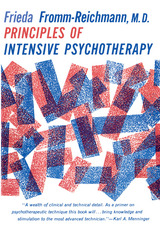
"One is continuously aware that here is a truly human being at work, human in the sense of exquisite awareness, on a profoundly intuitive level, of the workings of the human totality. . . . Because of this she can bridge the vast divide that separates us from the psychotic . . . thereby gaining access to the process of recalling the patient to his lost domain."—Louise E. DeRosis, M.D., American Journal of Psychoanalysis

Every night we enter a mythic realm, a dark, primordial world of fear and desire. What this world offers, Anthony Stevens suggests, may well be the key to understanding our waking mysteries--ourselves, our society, and our history. A prominent psychiatrist and practicing Jungian analyst, Stevens views dreaming from both psychological and neurological perspectives to show how dreams owe their origins as much to our evolutionary history as a species as to our personal history as individuals.
A work rich in symbolic and scientific insight, Private Myths traverses the course of dream interpretation from distant hunter-gatherer times to the present. This analysis is as authoritative as it is wide-ranging, including discussions of the biology of dreaming and the discovery of REM sleep, elaboration of the latest neuroscientific techniques in sleep research, and an assessment of the century-long legacy of analytic practice to dream interpretation. In a close look at the actual processes of dream formation, Stevens relates "dream work" to other creative capacities such as language, poetry, storytelling, memory, play, symptom-formation, magic, and ritual. He draws on his many years of experience to analyze key historical dreams, such as Freud's dream of Irma's injection and Hitler's dream of being buried alive, and enriches this discussion with analyses of his own and his patients' dreams.
Remarkable in its breadth, Private Myths makes the principles of dream interpretation accessible to scientists, the findings of dream science accessible to analysts, and the discoveries of both available to anyone intrigued by the mysteries of dreams and dreaming.

In The Private Self, Arnold Modell contributes an interdisciplinary perspective in formulating a theory of the private self. A leading thinker in American psychoanalysis, Modell here studies selfhood by examining variations on the theme of the self in Freud and in the work of object relations theorists, self psychologists, and neuroscientists. Modell contends that the self is fundamentally paradoxical, in that it is at once dependent upon social affirmation and autonomous in generating itself from within. We create ourselves, he suggests, by selecting values that are endowed with private meanings.
By thinking of the unconscious as a neurophysiological process, and the self as the subject and object of its own experience, Modell is able to explain how identity can persist in the flux of consciousness. He thus offers an exciting and original perspective for our understanding of the mind and the brain.
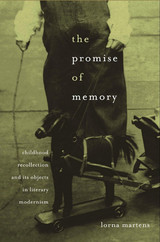
Readers once believed in Proust’s madeleine and in Wordsworth’s recollections of his boyhood—but that was before literary culture began to defer to Freud’s questioning of adult memories of childhood. In this first sustained look at childhood memories as depicted in literature, Lorna Martens reveals how much we may have lost by turning our attention the other way. Her work opens a new perspective on early recollection—how it works, why it is valuable, and how shifts in our understanding are reflected in both scientific and literary writings.
Science plays an important role in The Promise of Memory, which is squarely situated at the intersection of literature and psychology. Psychologists have made important discoveries about when childhood memories most often form, and what form they most often take. These findings resonate throughout the literary works of the three writers who are the focus of Martens’ book. Proust and Rilke, writing in the modernist period before Freudian theory penetrated literary culture, offer original answers to questions such as “Why do writers consider it important to remember childhood? What kinds of things do they remember? What do their memories tell us?” In Walter Benjamin, Martens finds a writer willing to grapple with Freud, and one whose writings on childhood capture that struggle.
For all three authors, places and things figure prominently in the workings of memory. Connections between memory and materiality suggest new ways of understanding not just childhood recollection but also the artistic inclination, which draws on a childlike way of seeing: object-focused, imaginative, and emotionally intense.
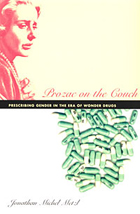
Prozac on the Couch traces the notion of “pills for everyday worries” from the 1950s to the early twenty-first century, through psychiatric and medical journals, popular magazine articles, pharmaceutical advertisements, and popular autobiographical "Prozac narratives.” Metzl shows how clinical and popular talk about these medications often reproduces all the cultural and social baggage associated with psychoanalytic paradigms—whether in a 1956 Cosmopolitan article about research into tranquilizers to “cure” frigid women; a 1970s American Journal of Psychiatry ad introducing Jan, a lesbian who “needs” Valium to find a man; or Peter Kramer’s description of how his patient “Mrs. Prozac” meets her husband after beginning treatment.
Prozac on the Couch locates the origins of psychiatry’s “biological revolution” not in the Valiumania of the 1970s but in American popular culture of the 1950s. It was in the 1950s, Metzl points out, that traditional psychoanalysis had the most sway over the American imagination. As the number of Miltown prescriptions soared (reaching 35 million, or nearly one per second, in 1957), advertisements featuring uncertain brides and unfaithful wives miraculously cured by the “new” psychiatric medicines filled popular magazines. Metzl writes without nostalgia for the bygone days of Freudian psychoanalysis and without contempt for psychotropic drugs, which he himself regularly prescribes to his patients. What he urges is an increased self-awareness within the psychiatric community of the ways that Freudian ideas about gender are entangled in Prozac and each new generation of wonder drugs. He encourages, too, an understanding of how ideas about psychotropic medications have suffused popular culture and profoundly altered the relationship between doctors and patients.

The Psyche and Schizophrenia offers a remarkably clear and comprehensive treatment of biopsychosocial development and psychotic processes. This extraordinary work lays the theoretical foundation for understanding the relationships between feeling and thinking (affect and logic) in normal as well as in pathological conditions, especially schizophrenia. Ciompi's affective-cognitive theory integrates interpersonal, familial, and social interactions with intrapsychic mental structures and yields startling new insights into the origins of "schizophrenic alienation." While Ciompi acknowledges the important role that genetic and biological models play in schizophrenia, he maintains that it is largely the psychosocial factors that determine long-term prognosis. Thus, The Psyche and Schizophrenia elaborates a number of new therapeutic approaches to the management of biological as well as environmental influences.
Drawing upon Piaget, Freud, and systems theory, as well as advanced current research, Ciompi develops a new model of the normal and pathological functioning of the psyche. This model presents cognition and emotion, the structure of logic and the dynamics of affects, as a complementary system governed by "ubiquitous laws of equilibrium."
In this brilliant synthesis of theoretical and empirical research, Ciompi proposes his novel theory of an "affectlogic" that probes the affective structures of logic as well as the logical structures of the emotions. Original in its conception and elegantly written, The Psyche and Schizophrenia is a major contribution to research on schizophrenia, and its penetrating insights and thorough analysis are sure to enrich the field of psychiatry for years to come.
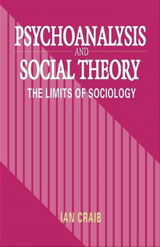


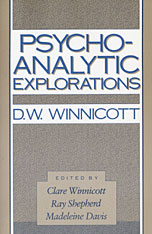

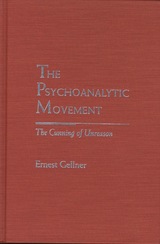

The book follows major themes, highlighting the similarities and differences among influential thinkers and schools of thought. At the same time, Psychoanalytic Theory is structured so that the chapters can be read in any order. Each one includes an introductory overview and summary, as well as biographical and historical material for each theorist discussed. This book is an essential starting point for any exploration of the contribution of psychoanalysis to contemporary theory.

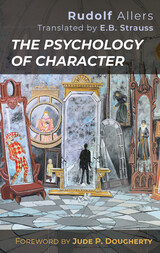

Contributors. Elizabeth Jane Bellamy, Teresa Brennan, Rosaria Champagne, Stathis Gourgouris, Catherine Liu, Kathleen McHugh, Robert Miklitsch, Abdul-Karim Mustapha, Laurence A. Rickels, Eugene Victor Wolfenstein, Slavoj Zizek
READERS
Browse our collection.
PUBLISHERS
See BiblioVault's publisher services.
STUDENT SERVICES
Files for college accessibility offices.
UChicago Accessibility Resources
home | accessibility | search | about | contact us
BiblioVault ® 2001 - 2024
The University of Chicago Press









